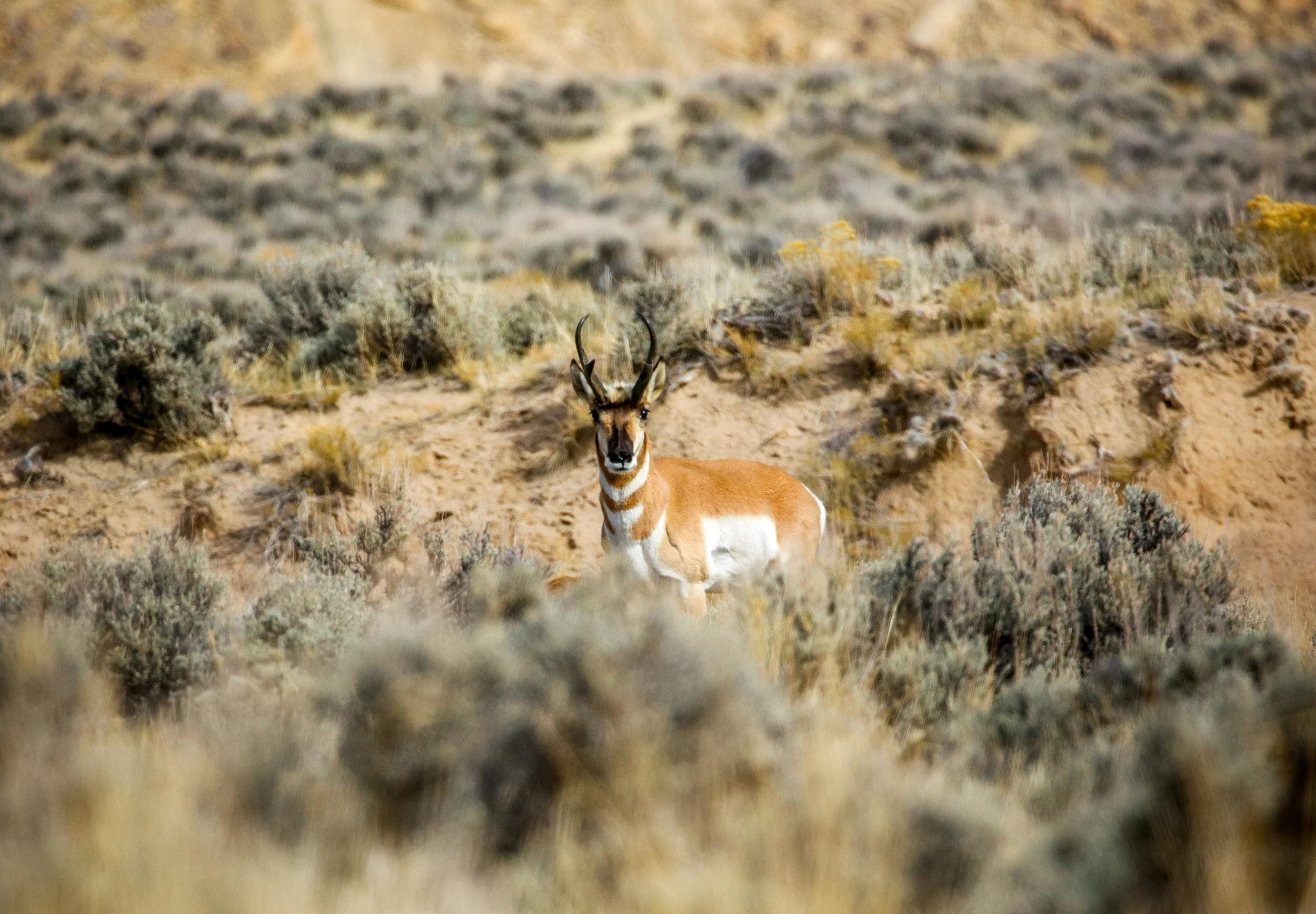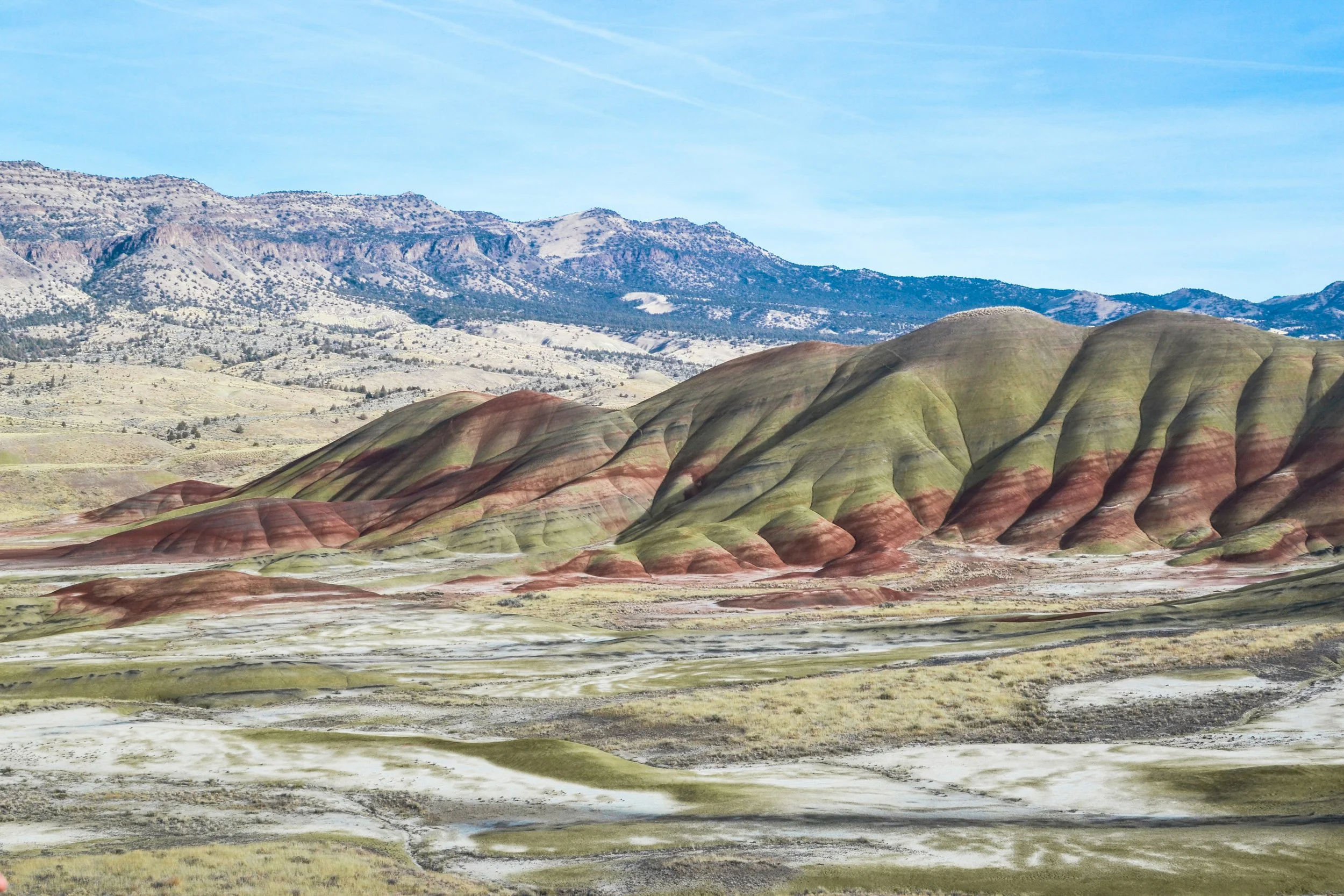The Other Oregon: Life on the Edge in the High Desert
Pronghorn - Unsplash 2025
I’m in Texas right now, in desert country. The landscape is dry, thorny, quiet. I haven’t seen much wildlife—just a few birds cutting the sky and the occasional flicker in the brush—but this place still hums with a tension I recognize.
Micah’s Substack is a reader-supported publication. To receive new posts and support my work, consider becoming a free or paid subscriber.
It reminds me of Oregon.
Not the Oregon most people picture or that I currently live in. Not the mossy, mist-covered forests or the dramatic coastline. I’m talking about the other Oregon—the high desert that sprawls east of the Cascades. It’s big, open, wind-scarred, and alive in ways you don’t expect. Spending time in the Texas desert this week has brought that sharply back into focus.
Oregon’s High Desert: Not Just Empty Space
Once you pass over the Cascade crest, the change is immediate. Rain-shadowed valleys give way to sagebrush flats. Ponderosa pines thin out. Mountains become dry ridges and fault-block cliffs. This is Oregon’s high desert—a region that covers nearly half the state, stretching across central and southeastern Oregon like a quiet counterweight to the coast and forest.
But this landscape isn’t just dry. It’s rich, layered, and fiercely alive—if you’re paying attention.
What Defines It?
Elevation: 3,000–6,000 feet above sea level
Climate: Semi-arid to arid, with hot summers, freezing winters
Dominant vegetation: Sagebrush, juniper, bunchgrass, rabbitbrush
Key wildlife: Pronghorn, mule deer, coyotes, golden eagles, sage grouse, horned lizards, jackrabbits
This is land shaped by fire, wind, and deep time. Volcanic activity laid the foundation. Glacial lakes receded and left behind playas, marshes, and fossil beds. The result is a place that looks still on the surface but is constantly shifting underneath.
Wildlife: Hard to See, Harder to Forget
Like in Texas, animals in the Oregon desert aren’t always out in the open. They’re crepuscular—moving at dawn and dusk. They’re camouflaged. They’re cautious. But they’re there.
You might spot:
Pronghorn—the fastest land animal in North America, gliding across open range
Greater sage-grouse—especially during spring lekking season, but sometimes visible year-round
Coyotes—silent, curious, always watching
Burrowing owls—standing at the edge of their dens in dry grasslands
Golden eagles—riding thermals above rimrock cliffs
Horned lizards and whiptail lizards sunning themselves on basalt
And we couldn’t forget the Rattlesnake —most likely curled up in the shade
And during migration windows, the wetlands and seasonal lakes in the desert—especially around Malheur National Wildlife Refuge—explode with waterfowl and shorebirds: sandhill cranes, avocets, teal, ibis, and more.
Where to Go: Towns and Gateways
If you want to see the desert side of Oregon, you need to go where the pavement thins and the distances stretch. Here are some of the best jumping-off points:
Burns / Hines
Why go: Access to Malheur National Wildlife Refuge, Steens Mountain, Alvord Desert
What you’ll see: Epic birding, pronghorn, wild horses, high ridgelines, and wide alkali flats
Bonus: Hit the Steens Loop Road (in late summer/fall when snow clears)
John Day / Fossil
Why go: Gateway to the Painted Hills and the John Day Fossil Beds
What you’ll see: Color-saturated formations, fossil history, dry hills full of mule deer and lizards
Bonus: Painted Hills at golden hour feel like standing on Mars
Painted Hills, Oregon - Unsplash 2025
Pendleton
Why go: Eastern Oregon cultural hub, with access to dry canyons and Columbia Plateau country
What you’ll see: Rolling hills, hawks, river corridors, and open ranchland
Bonus: Visit during the Pendleton Round-Up for history, culture, and real desert energy
Lakeview
Why go: Near Hart Mountain National Antelope Refuge
What you’ll see: Pronghorn herds, sagebrush steppes, natural hot springs
Bonus: Soak in Hart Mountain Hot Springs after a long day exploring
Paisley / Summer Lake
Why go: Tiny towns with huge access to desert basins and migratory bird hotspots
What you’ll see: Waterbirds, coyotes, dramatic sunsets
Bonus: Summer Lake Wildlife Area is a sunrise must
Why It Matters
Spending time in the Texas desert, even without seeing much wildlife, reminded me how easily we underestimate dry places. They don’t show off. They don’t beg for attention. But they’re full of ancient rhythms—migration, hibernation, blooming, molting, stalking, surviving.
Oregon’s deserts are no different. They’re not a lesser version of the lush side of the state. They’re an equal, opposite force—teaching patience, quiet observation, and humility. And they’re under threat from fire, invasive species, climate stress, and overuse.
And then there are the sunrises and sunsets. Wide open, horizon-to-horizon, like someone pulled the sky taut and set it on fire. They always stop me. Partly because they’re beautiful. And partly because they remind me of my husband—he used to write in letters that a good sunrise made him think of me. Said they were beautiful in the same way. So now, every time the sky flares up over a ridge or settles into that quiet lavender before dark, I pause. And I think of him.
If you care about Oregon’s wild places, the deserts matter just as much as the forests.
Texas Sunset - Micah McNeely, 2025
Callahan Wildlife Notes: Travel Tips for Oregon Desert
Go early or late in the day—especially for wildlife
Pack for extremes—hot days, cold nights, sudden storms
Binoculars are essential
Stay on trails—soil crusts and plant communities are fragile
Gas up often—services are few and far between
Respect private land—a lot of desert is fenced, but access points exist
Being in Texas has me craving a return to Oregon’s high desert. I want to see the light change on the Painted Hills. I want to hear the wingbeats of cranes at Malheur. I want to stand on the edge of the Alvord and feel like the last person on Earth.
Because the truth is: the desert is alive. It just doesn’t care if you’re watching.
Waiting to see a Tarantula,
Micah Callahan-McNeely
Founder of Callahan Wildlife


